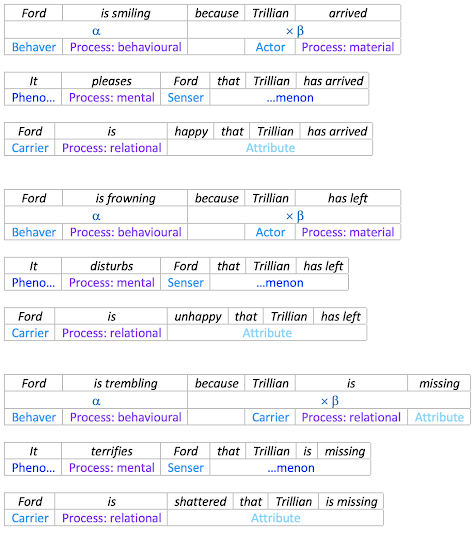Martin (1992: 16-7):
Second, there is the process of grammatical metaphor, whereby the content plane derives structures requiring more than one level of interpretation. The following proportionalities illustrate phenomena of this kind:
It is the second member of each set that concerns us here. Each is "literally" a circumstantial relational clause with a causal verb (i.e. led to, resulted in and engendered) relating two nominalisations. At the same time each clause codes a "figurative" or "transferred" meaning closely related to the meaning literally coded in the first member of each set. Halliday (1985b) relates multiply coded structures such as these to the evolution of writing in English, describing them as grammatical metaphors. They contrast with the congruent structures typifying spoken English, for which a single layer of coding provides an adequate interpretation.
Blogger Comments:
[1] To be clear, grammatical metaphor is Martin's second motivation for stratifying the content plane, despite the facts that the content plane is already stratified and grammatical metaphor was Halliday's principal motivation for doing so. As Halliday & Matthiessen (1999: 237) later explained:
If the congruent pattern had been the only form of construal, we would probably not have needed to think of semantics and grammar as two separate strata: they would be merely two facets of the content plane, interpreted on the one hand as function and on the other as form.
[2] To be clear, as the terms 'metaphorical' and 'congruent' make plain, both types of construal require more than one level of interpretation, since, if a construal is metaphorical or congruent, it is metaphorical or congruent with respect to some other interpretation. In the case of congruent construals, wording is congruent with respect to meaning, or, in the unstratified alternative, form is congruent with respect to function.



